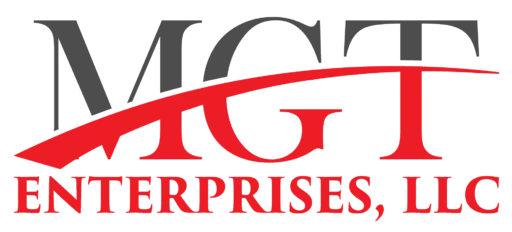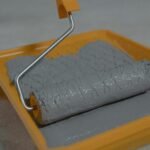Imagine a ceiling that doesn’t just reduce noise, it can help save lives. In active work environments, ceilings do more than manage noise. Modern fire resistant acoustic ceiling tiles absorb sound while meeting key life-safety features to make sound comfort, along with fire safety, simple and seamless.
With thoughtful planning and installation, these ceiling tiles add to Integrated commercial fire safety systems, the flow of comprehensive evacuation time, assist in compliance, and provide the public with a sense of security. With fire rating, acoustic performance, and compliance engineered into the product, ceiling tiles are essential for modern buildings in need of a union between calm and safety.
What Are Fire-Resistant Acoustic Ceiling Tiles?
Fire resistant acoustic ceiling tiles use construction materials with predetermined performance limits. The most common product types are mineral fiber tiles, lay-in gypsum panels, and manufactured fire-code-rated boards. Each of them has different fire resistance characteristics, sound absorption properties, and durability to meet the demands of most commercial interiors.
Performance Ratings
Manufacturers test their products to meet building codes for acoustic ceiling tiles. Burning and combustibility tests are then a part of the standard evaluation of ceiling tile products. For mineral fiber and gypsum-based panels, the designation of Class A surface-burn rating (the highest rating for flame spread and smoke) can be achieved if the tile actually passes this testing. This allows ceilings to meet acoustical performance and include tested protection in a fire situation.
Commercial Applications
In practice, these tiles are typically specified in a way as one piece in a broader commercial ceiling safety solution. Architects, contractors, and facility managers draw upon the tested ratings in order to create environments that meet occupants’ comfort while offering code-compliant fire safety. In this, ceiling products are inherently related to preparation that will happen outside of normal operation in order to protect occupants.
Testing And Code Context
It is important for designers choosing fire resistant acoustic ceiling tiles to understand the test standards that support performance claims. ASTM E84 and UL 723 are tests for surface burning characteristics. ASTM E119 and UL 263 are tests for complete fire-resistance assemblies.
Ceiling tiles alone aren’t rated systems. Fire protection is only achieved when the full ceiling-floor assembly is tested as a unit, meeting IBC and NFPA requirements for commercial fire safety.
Materials, Performance, And Limits
Material Selections
Most fire rated acoustic ceiling tile is manufactured from mineral fiber, gypsum, coated fiberglass, or lightweight honeycomb panels. Mineral fiber offers a low-cost choice with acoustic control, and gypsum offers higher levels of fire endurance and rigidity for heavy commercial use, options for ceiling safety solutions.
Acoustic Performance
These tiles offer strong sound performance, with Noise Reduction Coefficient (NRC) values typically ranging from 0.55 to 0.90 and Ceiling Attenuation Class (CAC) values often in the 35+ category. Fiberglass options typically provide the highest NRC values and should be a consideration for offices or healthcare facilities with a focus on speech privacy and noise reduction.
Performance Tradeoffs
While Class A surface-burn ratings are prevalent, performance can vary widely. Heavy gypsum panels resist sagging but may increase structural load, while mineral fiber occupies an intermediate performance profile between weight and price.
Fiberglass has moisture resistance but may trade fire endurance to attain more acoustic performance. Each manufacturer has documented the limits of their materials in the data sheet, helping designers to sift through and make a choice that produces an acceptable compromise among safety, acoustics, and durability.
Installation, Plenum Integration, and HVAC Considerations
When installing fire-rated acoustic ceiling tiles, care must be taken for grid system compatibility, hold-down clips, and firestopping requirements around utility penetrations. Each of these aspects is important to guarantee the system functions as it was tested and provides a true solution for the intended acoustic and life-safety performance. Missing even one installation detail may mean that the higher-performance tile may not perform as intended in the field.
With plenum spaces above ceilings, they create additional challenges as they can facilitate smoke during a fire. Working with the sprinkler layout and smoke control strategy is important for maintaining rated performance. Designers can reasonably provide some amount of acoustic rating, working with tested assembly details for reliable integration of mutually respecting performance as it relates to HVAC safety.
Maintenance, Testing, And Verification
Maintenance of fire resistant acoustic ceiling tiles consists of inspecting the panels, hangers, and perimeter seals to confirm that each has retained its integrity. During commissioning, mockups, shop drawings, and field verification should confirm that panels are installed according to the tested assemblies.
All documentation is very important as it relates to code verification, as well as the owner’s records that demonstrate that the system maintains its fire rating. Testing and testing techniques should routinely confirm both acoustic performance and general safety standards.
Specifying And Procurement Tips
- Assembly References — Clearly identify tested assembly numbers along with UL or ASTM report references to guarantee contractors are referencing approved standards, and the performance of fire resistant acoustic ceiling tiles remains consistent.
- Manufacturer Data — Specify all of the documentation from the manufacturer and the test reports from independent test labs to establish with assurance the performance claims to protect your procurement decision and level of safety for commercial ceiling solutions.
- Installation Details — Identify the installation strictly to the tested detail, which includes mockups or verified hold-down locations to mitigate errors in the field and maintain consistency in safety and performance of the acoustic system.
- Quality Assurance — Include clear acceptance criteria with field quality assurance inspections and performance verification, and guarantee that in the bid, contractors are prioritizing compliance and protecting the efficacy of fire resistant acoustic ceiling tiles.
Safety Above, Silence Within
Fire rated acoustic ceiling tiles are lifesaving and comfort-enhancing when they have been properly selected, tested, and installed. By specifying tested assemblies, enforcing installation details, and verifying performance, these commercial ceiling safety systems reliably deliver occupant protection, while also retaining acoustic quality exactly when it matters most.






